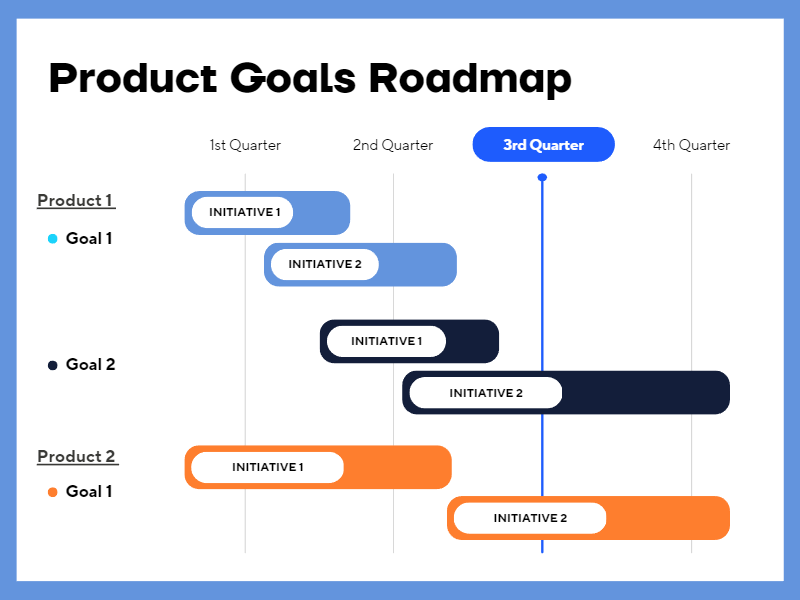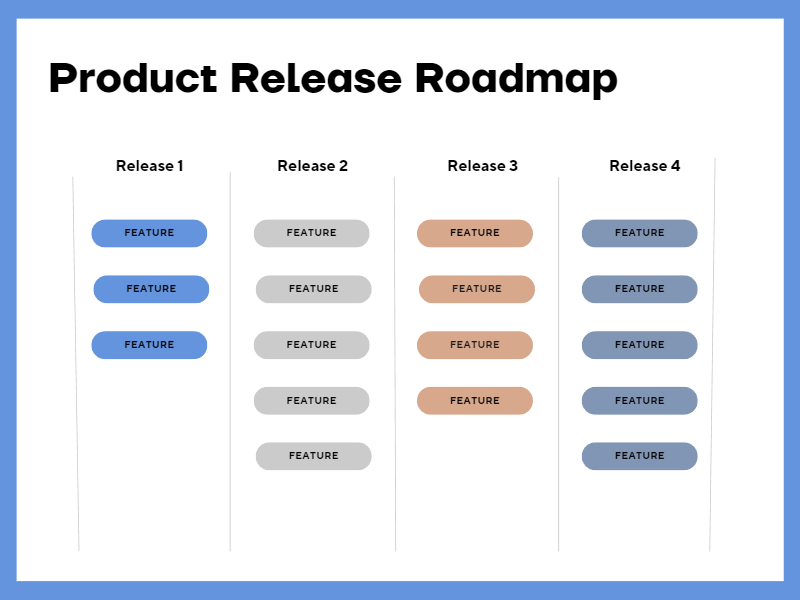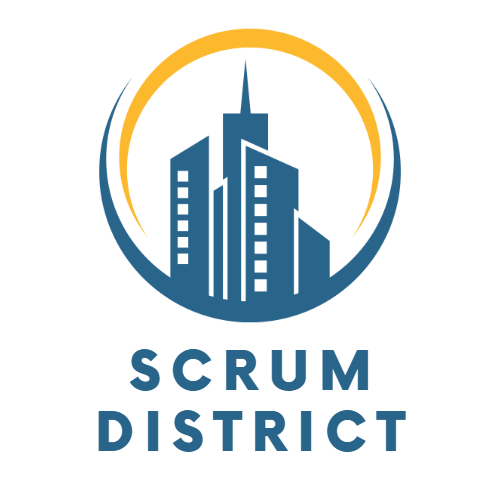Agile and roadmaps don’t always get along. At least, that’s how it feels when you first try to reconcile flexibility with planning.
When I started in product, I assumed roadmaps were fixed timelines. Stakeholders expected delivery dates. Teams expected certainty. But the more I worked in Agile environments, the more I realized: a good roadmap isn’t about predicting the future, it’s about communicating direction.
That’s why I started building roadmaps differently. Not as promises, but as working tools, designed to evolve as we learn, and strong enough to align everyone around the “why”.
Here is how I build Agile product roadmaps that actually work.
What even is an Agile Product Roadmap?
If you’re in an environment where Agile isn’t fully adopted, or where stakeholders still expect traditional project visuals, you might need to work with tools like Gantt charts. That’s okay. The goal is to balance transparency, planning, and adaptability.
But if you got the chance to adopt Agile fully, you know that an agile product roadmap is a living document that shows where you’re heading, why you’re heading there, and how that direction might evolve.
It’s not about saying you’ll ship next month. It’s about aligning the team on what problems you’re trying to solve and letting the solutions emerge through discovery, iteration and feedback.
There’s no universal format, but the roadmaps I’ve seen work best have a few consistent characteristics.
- First, they’re organised in themes or initiatives. Instead of “New onboarding flow” or “Pricing redesign”, think “Improve activation” or “Increase conversion”. Initiatives capture goals, not solutions.
- Second, time is expressed in broad horizons: usually Now, Next and Later. This lets you communicate timing without overpromising. It also builds space for discovery.
- Third, everything ties back to outcomes over outputs. A roadmap should show what you want to achieve, not just what you plan to build. That shift turns your roadmap from a to-do list into a strategic tool.
- And finally, it’s built to evolve. You’re not locking commitments. You’re sharing your best thinking until new data, insights, or learning shifts it. Which is exactly what Agile is built for.
How I build an Agile Product Roadmap – step by step?
I’ll walk you through how I approach it. This isn’t theory, it’s the real process I follow when starting a roadmap for a new product or a new phase.
Step 1: Clarify the vision and strategy
When it comes to identifying the right initiatives for my product, I always start by having a clear understanding of my product vision and strategy.
This helps me ensure that my goals and strategic decisions guide the initiatives and features I add to my roadmap.
So, before you talk about what’s next, zoom out. What’s your long-term product vision? What’s the strategy to get there? If these details are fuzzy, the roadmap will feel chaotic.
Here’s an example of a clear vision and strategy before you create the roadmap.
- Simplify user experience
- Expand into new markets
- Improve retention
You can also read these articles about product vision and product strategy.
Step 2: Identify the key problems to solve
I gather feedback from customers through the support, sales, and marketing teams. I also research my competition to find unique selling points.
I like to talk directly with users through interviews or surveys to gain valuable insights into their needs and desires. Product discovery is an ongoing process that should be done at every stage of the product life cycle.
These problems usually become the foundation of roadmap initiatives. “Users are dropping off after onboarding.” “Customers can’t track performance clearly.” That’s where we focus.
Check out this post for more helpful tips about product discovery.
Step 3: Group ideas into initiatives (or themes)
Next, I group product ideas, feature requests, and previous learnings under problem areas or outcomes.
At this point, I’m not thinking about delivery. I’m thinking about focus, where to direct discovery, testing and conversation.
Step 4: Prioritized based on Impact and Confidence
I use frameworks like RICE or just gut-check prioritization based on:
- How big the opportunity is?
- How much we understand it?
- How fast we could test something?
Step 5: Map the roadmap using Now/Next/Later
I place the prioritized initiatives into broad time horizons:
- Now: We’re actively working on it
- Next: We plan to focus on it soon
- Later: It’s on our radar, but we’re not exploring yet
Step 6: Share it and get feedback
Once I’ve gathered the necessary information, I schedule a brainstorming session with my immediate team, such as UX designers, technical leads, and other internal team members who can provide valuable feedback and insights.
During this session, I present my initial ideas for the roadmap and we discuss the benefits, possible risks, and success metrics associated with each initiative.
Then I bring in stakeholders. I’ll make sure I’m clear that it’s not a commitment doc. It’s a reflection of what we know now. That framing matters.
Step 7: Review and update monthly
The roadmap is a tool, not a shelf document. Every month, we look at what’s changed:
- Did we learn something that moves a Later item to Now?
- Did an initiative get unblocked or reprioritized?
- Do we need to retire something based on recent feedback?
A well-structured roadmap is only the beginning. Once we’ve aligned on initiatives and outcomes, the next challenge is turning those high-level goals into epics or features that the team can estimate, build, and release.
How I find the features that will support the initiatives
I focus on one initiative at a time by considering the priorities we have established in the initial step.
This is a good time to have a user story-mapping session with the team. In these sessions, the product owner or the product manager, the UX designer, and the development team should be present.
Let’s see how such a session should happen.
- To start, I present the context to the participants. They should know what goals we should achieve with the initiatives we have on our roadmap.
- Then, we begin the brainstorming session and find the necessary features aligning with each initiative. We add the features to a visual board and sometimes split the extensive features into smaller items that can be translated into user stories. Or I do this by myself after the brainstorming session and ask my team for feedback.
- We prioritize the items we have added to the board. I like using the MoSCoW technique and applying it for the features and the small items that resulted. Given our resources and constraints, considering the feasibility of the features we’ll build is essential. If any refactoring is required, we may also need to consider extending the timeline to fit this piece of work.
- During the session, the development team will provide a high-level estimation for the features. This will help me understand how to plan the releases. The estimation may change as the team progresses with the project and learns more. So, remember that this is not a set-in-stone plan but something that we will work hard to accomplish.
When You Still Need Timelines: How to Adapt Agile Roadmaps in Complex Organizations
That said, not every team has the luxury of abandoning dates entirely. If you’re working in a large organisation with multiple product teams and external dependencies, you’ll often need to create a more structured, time-based roadmap alongside your Agile one.
In these cases, you can build two layers of roadmaps:
1. A higher-level, cross-team roadmap
It includes details about how the work is advancing, that’s shared between the other product owners, stakeholders, and other departments. This includes the product goals, the initiatives that support the goals, and the timeline as you can see below.

2. A team-facing roadmap
- The second roadmap contains information that is more relevant for the development teams and product owners. Such as the features associated with the current initiative, split by releases.

Differences between the roadmap for startups and the roadmap for mature products
Startups and mature products are in different stages of the development life cycle, so their roadmaps can differ significantly.
For example, when you build a roadmap for a startup, you’re focusing on finding the right market fit, identifying the right features, and experimenting with different strategies to attract customers. This makes the roadmap more flexible as the company adjusts to feedback from early adopters on the market.
Mature products on the other hand have an established customer base and a clear understanding of the value proposition. So, a roadmap for a mature product is focused on maintaining and enhancing the product’s market position, optimizing features, and addressing customers’ needs and pain points.
The mature product roadmap is usually more structured, and data-driven as the company leverages customer feedback, market research, and analytics to make informed decisions.
Who owns the product roadmap?
The ownership of the roadmap can vary depending on the organization and the product development process.
In most cases, the product manager is responsible for creating and maintaining the roadmap. However, some companies have opted to replace the product manager role with the product owner role in the Scrum framework. This decision may be due to the specific nature of the product development process of each company.
In cases where both product managers and product owners work together on a product, they can collaborate on building the roadmap.
Product Roadmap best practices
How you manage the roadmap can benefit or damage the success of your product. So, I’ve got some tips for creating a great roadmap.
- Create a roadmap that is aligned with your company’s vision, goals, and strategy. This way you ensure that the product development efforts are focusing on the right areas.
Let’s say your company’s goal is to provide a user-friendly project management tool for small businesses. But your roadmap only contains initiatives that benefit enterprise companies. This is a clear example of misalignment between the roadmap and the company’s objectives. - Prioritize initiatives based on their impact on the product and the company.
- Keep the roadmap flexible and adaptable to changes that appear in the market and in the company’s strategy. Regularly make updates to reflect changes in priorities.
- Share the roadmap with everyone who should be aware of the product’s progress. This includes developers, marketing, design, sales, and customer support.
Now let’s talk about some things you shouldn’t do.
- Don’t include too many details. Product roadmaps should provide a high-level view of the product development plan. Avoid adding too many details or specific implementation plans because it will become difficult to update it every single time you make a change.
- Don’t make unrealistic promises. You should set realistic expectations and avoid promising features that cannot be delivered in the given timeline.
- Don’t ignore customer feedback. This is one of the best places where you can get information to build a successful roadmap.
- Don’t create a complex roadmap. Stakeholders should easily understand what your plans for the product are and stay informed about the progress.
Conclusions
Creating and maintaining a well-structured roadmap is crucial for any organization that wants to achieve its goals and succeed in the market.
Using online roadmap tools can also streamline the process and facilitate collaboration among team members. I personally prefer working with Miro, but there are other options you can choose from, such as Aha!, Roadmunk, Jira, or Product Plan.
What are the steps you follow to build a product roadmap?
Let me know in the comments section below.

